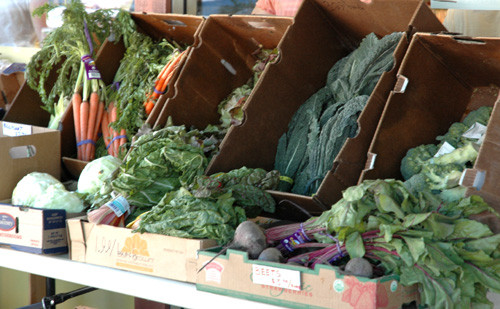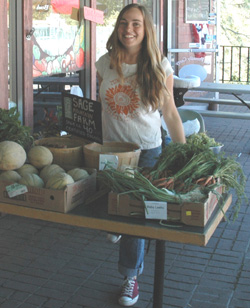
Mountain Harvest Market in Strawberry Plaza promotes itself as the local organic food one-stop. With the addition of more local growers, Mountain Harvest’s mangers are also part of the growing preference of many organic food lovers to eat locally produced fruits and vegetables. While Fairway and Village Market stock organic produce, only Village Market also buys some local produce, according to owner Jay Johnson.

Eating locally grown food is a movement that’s popularity is expanding. Local produce has benefits for the environment. For example, it reduces the long distance trucking of food, consequently less gas consumed, less exhaust and greater food freshness.
“Locavores,” as they are known, choose to eat food grown within a 100-mile radius from home, both to support commitment to environmental and sustainability goals and for reasons of freshness and reduction in or lack of pesticides used to grow mega-farm food. The idea originated early this century. In 2007, locavore was the word of the year for the Oxford American Dictionary.
Mountain Harvest Market has long bought from on-the-Hill certified organic grower, Sage Farms in Aguanga, according to Melissa Townsend, the store’s produce buyer. Townsend has recently added an additional four local growers.
Rios Farms in Banning provides seasonal peaches and Heritage Gravenstein, a local Idyllwild orchard, supplies apples. Sky Farm Organics in Hemet provides heirloom tomatoes and navel oranges and La Rath Farms in Aguanga is the source for garden vegetables such as zucchini, yellow squash, tomatoes, red potatoes and green beans. All produce from the new sources is “spray or chemical free” but not all is yet certified organic, Townsend notes. For example, La Rath is a “transitional organic” farm, in the process of obtaining its USDA organic certification.
Fairway Market is also stepping up its organic stocking, with organic chicken in the meat and poultry section and certain labeled organic produce in the produce section. None of it is necessarily local in origin, according to Fairway Manager Diana Johnson.
“We get our produce from Unified Grocers in Los Angeles,” she said. “”Where they get it, I don’t know.”
Village Market gets some of their eggs and tomatoes from Anza farmers, according to Johnson, and some vegetables from farmers in Pinyon.
The “eat local” movement also has, as one of its stated goals, to fight global warming by reducing how much food is shipped long distances and to reduce petroleum used facilitating that transportation. Anuradha Mittal, executive director of the Oakland Institute, cited some surprising food transportation statistics in making the case for eating locally and eschewing corporate produce purchasing.
Mittal, using California as an example, noted: 20 percent of Californa table grapes are sent to China, the world’s largest producer of table grapes. Half of all processed tomatoes grown in California are exported to Canada at the same time the United States imports $36 million in Canadian processed tomatoes annually; the U.S. imports $19 million of Canadian cherries annually at the same time that Canada is the second biggest importer of California cherries.













